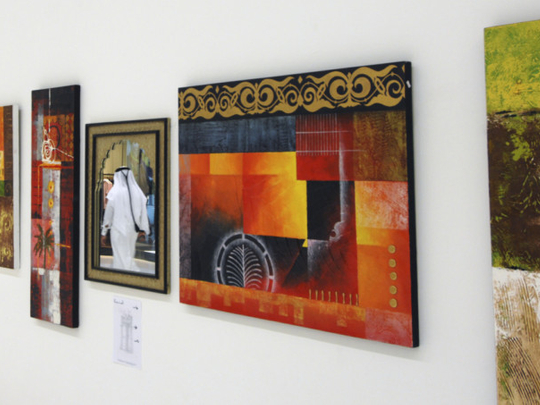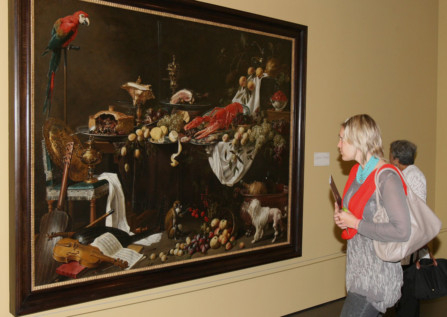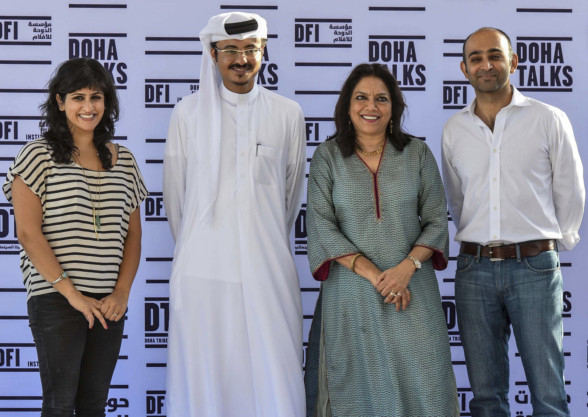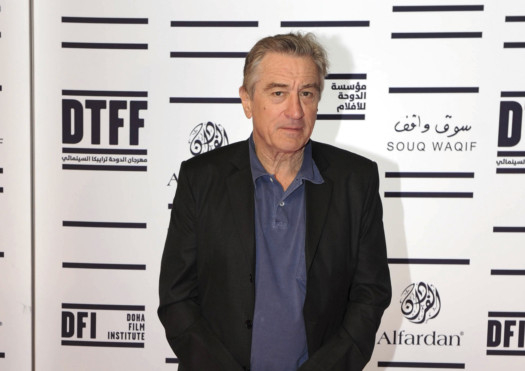
The main impression visitors get from Doha when they arrive at the airport and drive down the capital’s corniche is that art is thriving on the small desert peninsula. The first iconic building to notice is the impressive Museum of Islamic Art.
On 45,000 square metres, the museum houses a collection of works gathered since the late 1980s, including manuscripts, textiles and ceramics. It is one of the world’s most complete collections of Islamic artefacts, with items originating from Spain, Egypt, Iran, Iraq, Turkey, India and Central Asia.
The museum was opened in 2008 and spurred a great number of other cultural projects, reflecting the aim of the ruling Al Thani family to give the country a reputation as a top-notch cultural destination.
The Mathaf: Arab Museum of Modern Art opened in Doha in 2010. As the first institution of its kind in the region, the museum offers an Arab perspective on modern and contemporary art. It was also responsible for the fact that the emirate has become the world’s biggest art buyer in a massive spending spree by the royal family to enhance its cultural portfolio ahead of the 2022 Fifa World Cup tournament.
According the The Art Newspaper, Qatar has emerged as the world’s biggest buyer in the art market by value and has been behind most of the major modern and contemporary art deals over the past six years. Purchases include works by Andy Warhol, Mark Rothko, Jeff Koons, Roy Lichtenstein, Francis Bacon and other big names in the modern art scene.
Shaikha Mayassa Bint Hamad Al Thani, daughter of the emir and chair of the Qatar Museums Authority (QMA), is a major collector. She also appointed Edward Dolman, chairman of art auctioneer Christie’s, as executive director of her office and member of the board of trustees of the QMA.
Shaikh Saud Bin Mohammad Bin Ali Al Thani is another passionate art buyer in the Al Thani family. He was recently named as one of the world’s top ten collectors by New York’s leading art magazine Artnews.
Next openings
US statistics indicate that cultural exports to Qatar totalled $430 million (Dh1.57 billion) from 2005 to April 2011, making the country a major art buyer from the US. In the same period, Qatar imported $205 million worth of paintings and antiques from the UK, according to trade statistics.
Future plans for museums in Qatar include the National Museum of Qatar, designed by Jean Nouvel, with a collection of 8,000 historical objects, which will replace the existing Qatar National Museum. The new museum, whose architecture is inspired by the desert sand rose and grows organically around the former palace where the Qatar National Museum is currently located, is scheduled to open in December 2014.
The museum will house artefacts from Bedouin culture, as well as exhibits of both the desert and Arabian Gulf’s natural history, of tribal wars, and the establishment of the Qatari state. The museum will also depict the state’s evolution from oil discovery to the present.
Another ongoing project is the conservation activity in the Museum of Orientalist Art.
It houses one of the world’s most significant collections of the Orientalist art movement, consisting of about 900 paintings, watercolours, drawings and prints, as well as sculpture and applied art. Conservation work is carried out by UK-based specialists Plowden & Smith.
The museum is currently not in full operation and not open to the general public. Selections of significant artworks are loaned to international museums for exhibitions on a regular basis, as well as displayed in exhibitions the museum organises in Doha and internationally.
Apart from the leading art museums, there is also the Maritime Museum, in which the fish wealth of Qatar is displayed, and a small lagoon where wooden traditional boats built in Qatar are moored. There are also a number of regional museums including Al Khor Museum in Al Khor town about 57 kilometres north of Doha, displaying anthropological life excavation discoveries in Al Khor area.
The Al Wakrah Museum lies in Al Wakrah town about 17 kilometres from the capital and displays marine life and natural history materials.
The Weaponry Museum displays rare samples of swords, daggers and miscellaneous firearms and their accessories, and the Ethnographic Museum is the last remaining Arabian construction of its kind in Doha.
Art and entertainment
There are also historical forts, such as Al Zubara Fort 105 kilometres northwest of the capital; Doha Fort or Al Koot, one of the last remaining military forts in Doha; and Al Wajba Fort south of Doha, deriving its historical importance from being a fames battleground in which the Qatari people defeated the Ottoman forces in 1893.
Those looking for a combination of culture and entertainment will find the Doha Tribeca Film Festival worth a visit. Held annually since 2009 by the Doha Film Institute, an organisation founded by Shaikha Mayassa in partnership with New York-based Tribeca Enterprises, its aim is to promote Arab and international movies. This year, the festival attracted more than 50,000 visitors. The festival is regularly giving an impressive reflection of the amount of local talent of film-makers that can be found in Qatar. This year’s edition marked the largest showcase of Made in Qatar films, including 15 world premieres, as part of an overall festival line-up of more than 87 films.
The film festival is held at Katara, or the Cultural Village, a site that has been developed as a hub for art and cultural exchange. It was soft-opened in 2010 and today houses organisations such as the Qatar Fine Arts Society, the Visual Art Centre, the Qatar Photographic Society, the Childhood Cultural Centre, the Theatre Society and the Qatar Music Academy. It is also home to the Opera House, where the Qatar Philharmonic Orchestra performs frequently.











